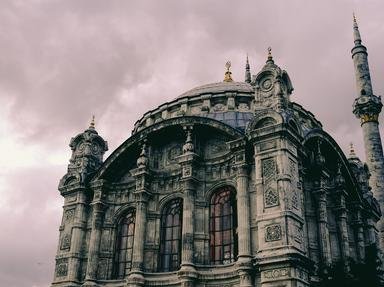Quiz Answer Key and Fun Facts
1. The unit of Janissaries in the army of the Ottoman Empire is considered to be the Europe's first modern standing army.
2. Which of the following words would describe a characteristic of the first Janissaries taken?
3. Which of the following words does NOT describe a Janissary during the early days of the group's formation?
4. Who was considered to be the leader of the Janissaries?
5. Janissaries eventually learned to use a variety of weapons. When the group was first established, however, what was their role in the military?
6. What tradition within the Janissary corps is considered to be the first in the world?
7. A distinctive part of the Janissary's uniform, what type of hat did a Janissary wear?
8. Janissaries were organized into battalions called ortas within the Ottoman army and were present at battles that were fought by the Ottoman Empire. What city did they help capture in 1453?
9. Eventually the Janissaries became such a powerful group that they could even depose the Sultan himself.
10. In 1826 the corps of Janissaries in the Ottoman army were disbanded. What was the name of this event?
Source: Author
ponycargirl
This quiz was reviewed by FunTrivia editor
gtho4 before going online.
Any errors found in FunTrivia content are routinely corrected through our feedback system.
